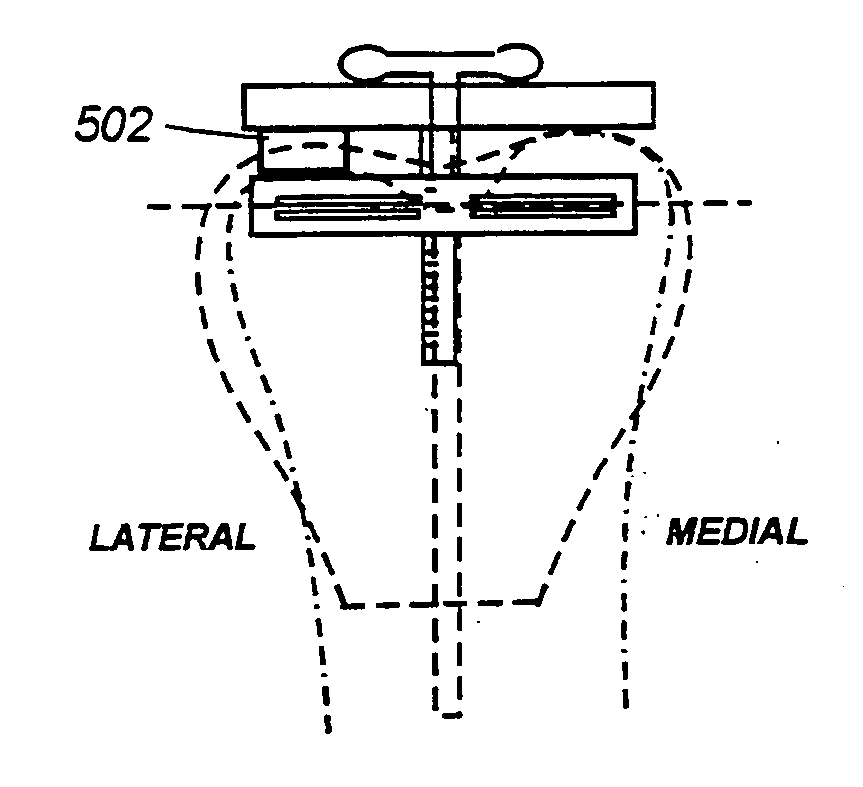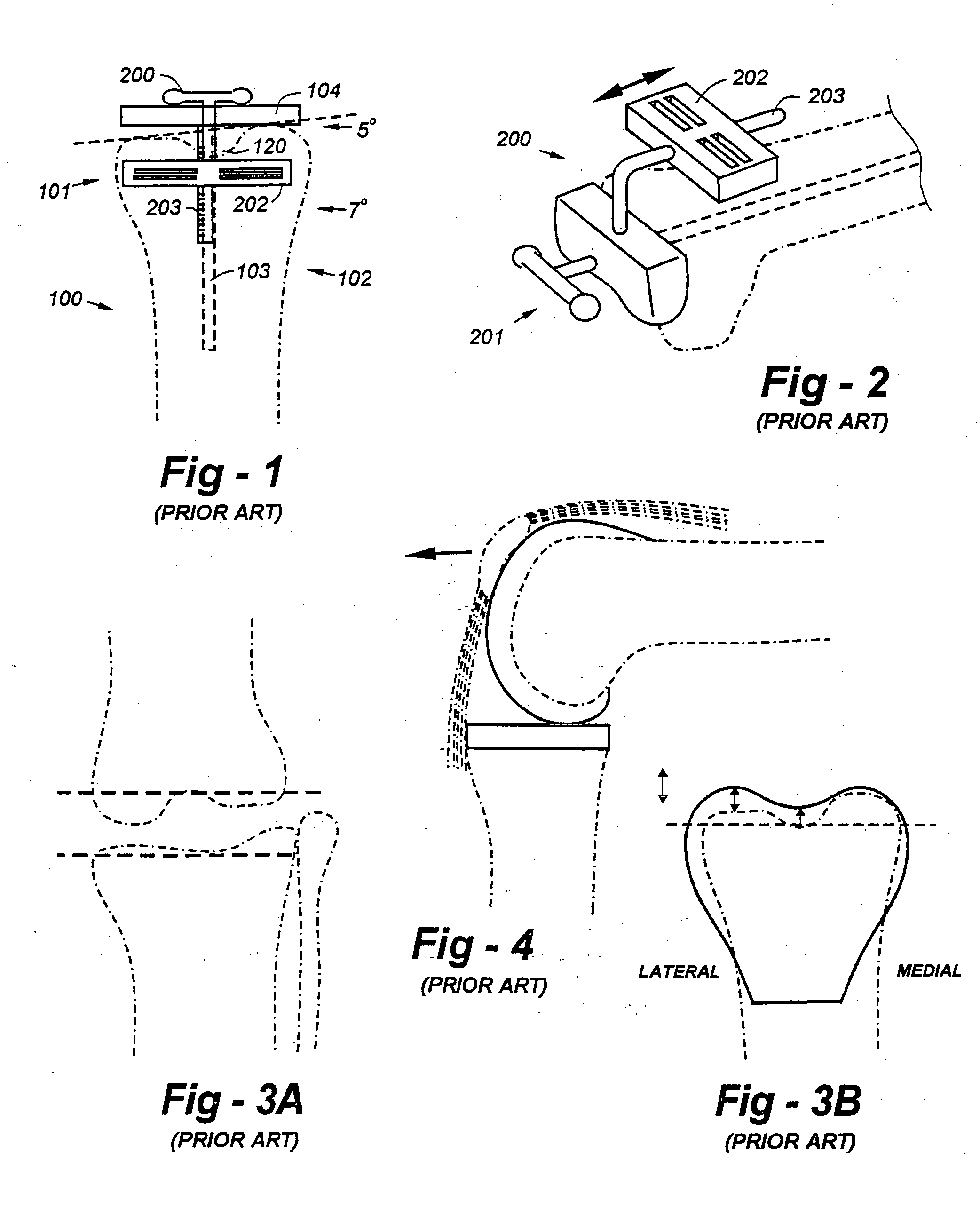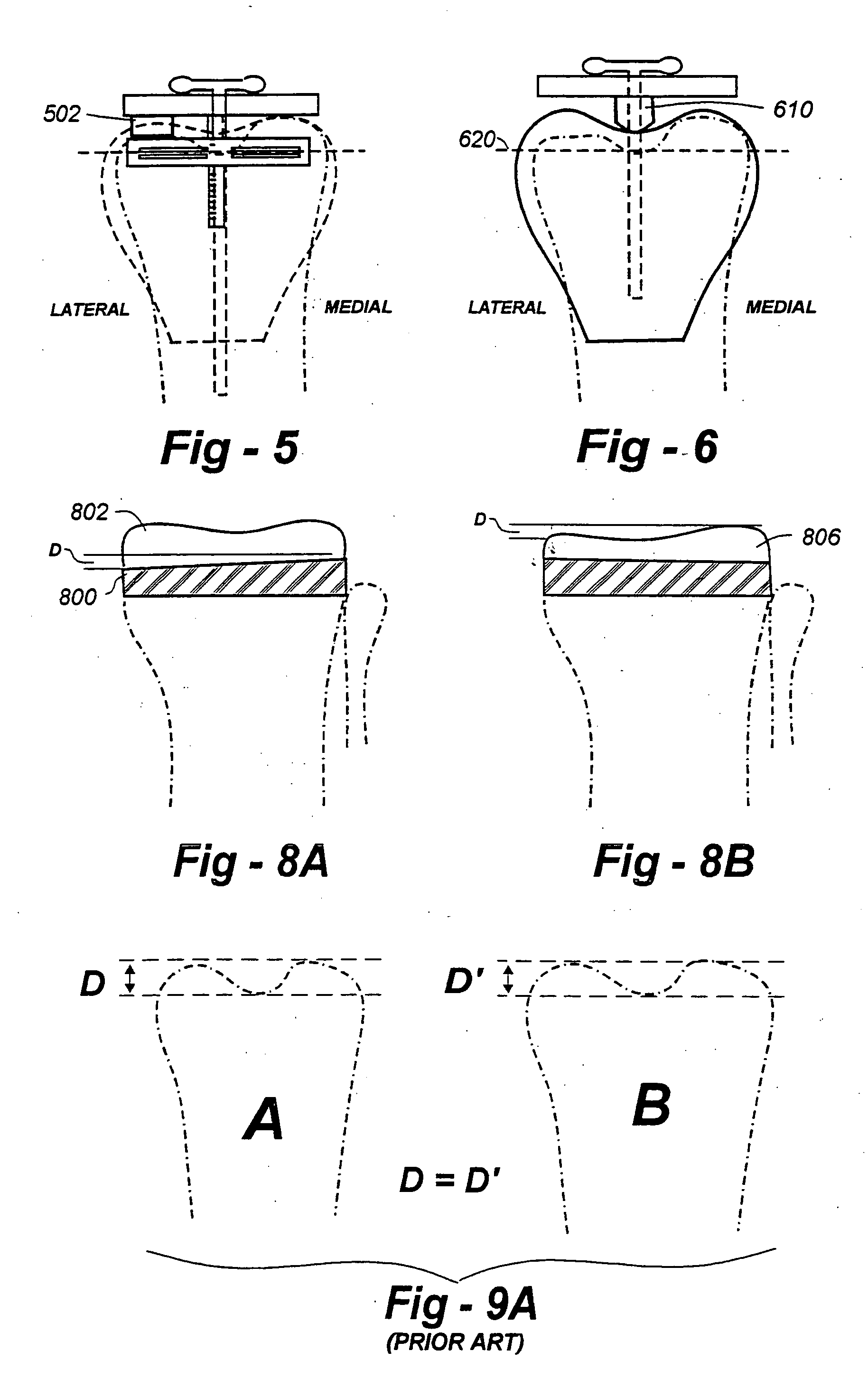Optimizing patellar femoral mechanics through alternative depth referencing
a technology of depth reference and femoral mechanics, applied in the field of orthopaedic surgery, can solve the problems of increased force on the patella in flexion, restricted movement and pain, and increased flexion force of the patella, so as to improve the depth of the trochlea and improve the implant size. , the effect of optimizing the patellar femoral mechanics
- Summary
- Abstract
- Description
- Claims
- Application Information
AI Technical Summary
Benefits of technology
Problems solved by technology
Method used
Image
Examples
Embodiment Construction
[0029] Having discussed the deficiencies of the prior art with reference to FIGS. 1 through 4, the reader's attention is now directed to FIG. 5, which illustrates a distal cutting guide according to the invention which references the lateral femoral condyle as opposed to the medial condyle. In the event that the lateral femoral condyle is normally formed, a spacer 502 may be positioned between the extent of the lateral condyle and the distal plate, as shown. The amount of bone resected then would correspond to the difference between this point and the position of the cutting guide. If some bone loss were to occur laterally, this could be compensated through the use of a thicker spacer.
[0030] As an alternative, a preferred embodiment is seen in FIG. 6, wherein an appropriately shaped spacer is placed in the region of the trochlea so as to perform the distal resection relative to the trochlea. In this manner, one would be sure that when one restored the ultimate final implant, that i...
PUM
 Login to View More
Login to View More Abstract
Description
Claims
Application Information
 Login to View More
Login to View More - R&D
- Intellectual Property
- Life Sciences
- Materials
- Tech Scout
- Unparalleled Data Quality
- Higher Quality Content
- 60% Fewer Hallucinations
Browse by: Latest US Patents, China's latest patents, Technical Efficacy Thesaurus, Application Domain, Technology Topic, Popular Technical Reports.
© 2025 PatSnap. All rights reserved.Legal|Privacy policy|Modern Slavery Act Transparency Statement|Sitemap|About US| Contact US: help@patsnap.com



